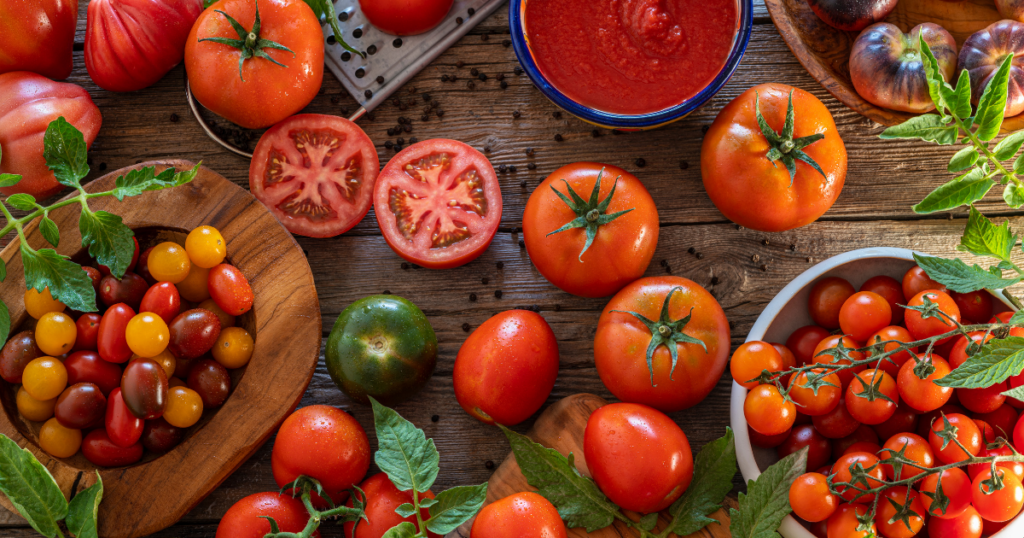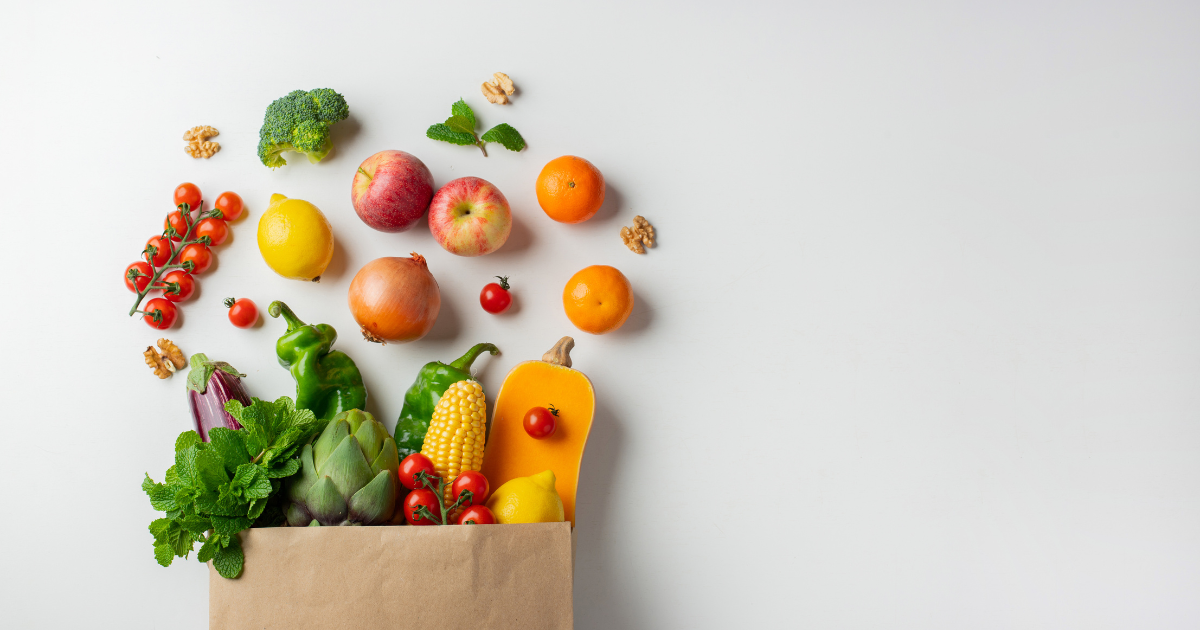Browse around
topics
Hey!
REGISTERED DIETITIAN & HEALTH ADVOCATE.
I'm Kat
Book a free call with me to learn more about how I can help you improve your relationship with food and stress less about nutrition!
Maple Butter Salmon
RECIPES
4 Nutrients That Slow Skin Aging
NUTRITION
Nutrition for Migraine
NUTRITION
Apple Cider and Ginger Mocktail
RECIPES
1:1 Nutrition
Are you looking for an expert registered dietitian in West MI? Learn more about my virtual counseling services!
Skin aging continues to reign as one of the most prevalent dermatological and cosmetic concerns across the globe.
Maturing skin is an intricate process that occurs due to both extrinsic factors, like UV radiation and environmental pollution, and intrinsic factors, such as chronological aging (actually getting older) and genetic predispositions.
It is very likely that as you get older, you will experience some indications of skin aging, including wrinkles, dryness, discoloration, loss of pigment, and susceptibility to irritation.
This, in turn, provokes many people to pour a significant sum of money into cosmetics and treatment plans to combat the frustrating signs and symptoms of aging skin.
But what if the anti-aging secrets you are looking for can be found in the aisles of your local grocery store?
A recent scientific revolution in skin health has emphasized the importance of our eating habits, dietary components, and nutrient levels on our biological “skin clock”.
I will, of course, also teach you which foods contain these compounds so that you know exactly how to use food to help turn back the clock on skin aging.
Because who doesn’t like the sound of that?
Let’s get into it!
This article was written while interning for my past mentor Andy De Santis.
Lycopene

Lycopene is a naturally occurring bioactive compound in the carotenoid family and is responsible for the red pigment in certain plants.
Carotenoids are crucial for maturing skin because they reside in the layers of our epidermis (outer layer of the skin), and increased levels of carotenoid contents within these layers have been shown to prevent aging, improve skin integrity and hydration, reduce wrinkles, and even increase collagen production.
A review out of the 2021 Nutrients journal on skin health found that supplementing with dietary carotenoids such as lycopene for six weeks resulted in an increase in protection against sun damage, a reduction in sun-burn cells, and an increase in skin pigment, which all have lasting effects on the skin-aging process.
A study out of the 2012 Food Chemistry journal found that lycopene on its own effectively reduced inflammation through stimulating the release of anti-inflammatory cytokines in human blood, and with inflammation being one of the primary causes of skin aging, these results are promising in regards to lycopene’s anti-aging effects.
You can get your daily dose of lycopene by adding tomato products into your diet, especially sun-dried tomatoes and tomato puree, as well as fresh and canned tomatoes.
If tomatoes aren’t your jam, lycopene can also be found in other red fruits, such as watermelon, guava, and grapefruit.
*However, it is important to note that most of the research done on lycopene uses tomato products.
Resveratrol
Resveratrol is a polyphenolic antioxidant that appears in a variety of different fruits and is well-regarded within the science community as a potentially powerful “anti-aging” compound.
When we take a step back and look at plant polyphenols in general and their effect on skin function, the research shows that they have a beneficial impact on skin hydration, redness, elasticity, and can even advance the natural regeneration of our outer skin layer (epidermis).
Further, polyphenols, including resveratrol, have antioxidant and anti-inflammatory effects that prevent collagen degradation and oxidative damage in the skin, which are both direct causes of premature and/or more severe skin aging.
A comprehensive review from the 2020 journal Antioxidants noted that recent findings have shown positive effects of grape resveratrol on anti-aging through its work as a free-radical scavenger and chelating agent (a compound that bonds and removes heavy metal ions).
So, how can you add this “extraordinary” anti-aging compound to your diet?
The most frequent and examined source of resveratrol is grapes, however, it can also be found in cranberries, blueberries, and plum fruit.
For those who may consume it, there is also a substantial amount of resveratrol in red wine, which continues to be a topic of curiosity in the realm of polyphenols and anti-aging.
Curcumin
Curcumin is a bioactive compound isolated from the root of turmeric and has garnered a lot of attention in the world of research on both anti-aging and skin conditions is among the top-selling supplements on Amazon.
It’s most famous for its potent anti-inflammatory capacity, which is one of the primary reasons why it is thought to be beneficial for skin health.
In addition to this anti-inflammatory potential, curcumin also has strong antioxidative and antibacterial properties that have led it to be considered a proprietary component for a nutritional anti-aging regimen.
In a 2019 randomized trial, researchers gave turmeric extract to 47 healthy participants and saw a significant increase in facial water content and hyaluronic acid production, deeming turmeric an “effective moisturizing agent” and further suggesting that curcumin has the potential to reduce any dryness caused by aging skin.
The same study also observed that the subjects who underwent the turmeric intervention saw a significant inhibition in inflammation markers and UVB-induced sunburn cells compared to the placebo group.
Since curcumin is found in turmeric root, the most common ways to consume it are in powder form (tossing it into smoothies or “golden milk” lattes) and capsule form.
Both capsules and powders can be found online through Amazon or at your local health-food store.
Green Tea Polyphenols (GTPs)

Continuing on the polyphenol train, the next class of polyphenols that can impact skin aging are the compounds found in green tea, also known as GTP’s (green tea polyphenols).
GTP’s are found in the leaves of green tea and contain four major polyphenols: epicatechin (EC), epicatechin gallate (ECG), epigallocatechin (EGC) and epigallocatechin gallate (EGCG).
A promising study reviewed in the 2021 Nutrients journal concluded that GTP’s have the ability to mitigate the symptoms of skin aging caused by UVB radiation.
Another study highlighted by the same journal gave oral supplements of GTP’s to 40 women in a randomized trial and found a significant increase in skin elasticity compared to those who didn’t take the GTP’s (placebo group).
While more long-term studies in humans are needed to truly identify the effects of GTP’s on skin aging, the current research leaves me hopeful that incorporating green tea into your diet will have favorable effects on anti-aging and skin health.
To state the obvious, you can consume green tea polyphenols by drinking green tea (shocker, right?), but it is also worth noting that matcha powder, while less studied, has an even higher amount of GTP’s than conventional green tea.
Final Thoughts
The dietary components discussed in today’s article appear to have the real potential to delay skin aging by relieving oxidative stress and reducing inflammation and, in turn, maintaining your skin’s structure and integrity.
If you want to leverage nutrition as part of your skincare routine, I’d like to think you now have the tools to do so.
Even so, it’s still important for me to clarify that skin aging is a long-term process that occurs over many years, and while the research we’ve looked at today is reassuring, there is still ground to cover in determining the link between food and maturing skin.
View the full article on Andy’s website here.
Pin
Share
Leave a Reply Cancel reply
Previous Story
next Story
© 2023 Kathryn Durston, RDN. Site by Sugar Studios
Get the free guide download straight to your inbox!
5 Easy Tips for Relieving Stress Around Food
Join Me on Insta
I'm so glad to have you here. Take a deep breath and look around!
